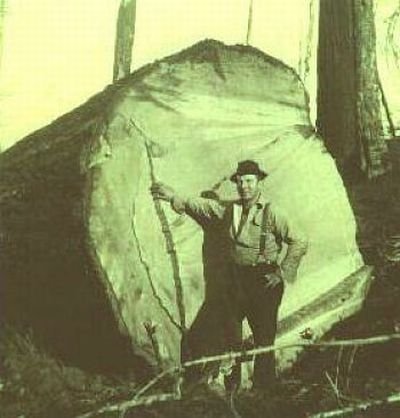|
|
Record Breaking Tree
|
As an exogenous tree grows, it creates growth rings as new wood is laid down concentrically over the old wood. In species growing in areas with seasonal climate changes, wood growth produced at different times of the year may be visible as alternating light and dark, or soft and hard, rings of wood. In temperate climates, and tropical climates with a single wet-dry season alternation, the growth rings are annual, each pair of light and dark rings being one year of growth; these are known as annual rings. In areas with two wet and dry seasons each year, there may be two pairs of light and dark rings each year; and in some (mainly semi-desert regions with irregular rainfall), there may be a new growth ring with each rainfall. In tropical rainforest regions, with constant year-round climate, growth is continuous and the growth rings are not visible nor is there a change in the wood texture. In species with annual rings, these rings can be counted to determine the age of the tree, and used to date cores or even wood taken from trees in the past, a practice known as the science of dendrochronology. Very few tropical trees can be accurately dated in this manner. Age determination is also impossible in endogenous trees.
The roots of a tree are generally embedded in earth, providing anchorage for the above-ground biomass and absorbing water and nutrients from the soil. However, while ground nutrients are essential to a tree's growth the majority of its biomass comes from carbon dioxide absorbed from the atmosphere (photosynthesis). Above ground, the trunk gives height to the leaf-bearing branches, aiding in competition with other plant species for sunlight. In many trees, the arrangement of the branches optimizes exposure of the leaves to sunlight.
Not all trees have all the plant organs or parts mentioned above. For example, most palm trees are not branched, the saguaro cactus of North America has no functional leaves, tree ferns do not produce bark, etc. Based on their general shape and size, all of these are nonetheless generally regarded as trees. A plant form that is similar to a tree, but generally having smaller, multiple trunks and/or branches that arise near the ground, is called a shrub. However, no precise differentiation between shrubs and trees is possible. Given their small size, bonsai plants would not technically be 'trees', but one should not confuse reference to the form of a species with the size or shape of individual specimens. A spruce seedling does not fit the definition of a tree, but all spruces are trees.
|
|









